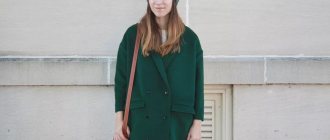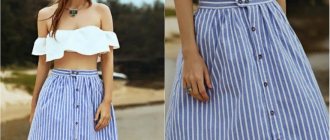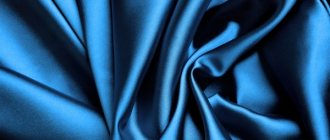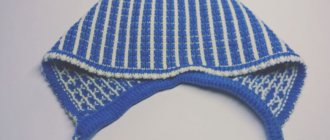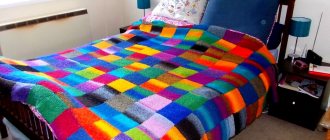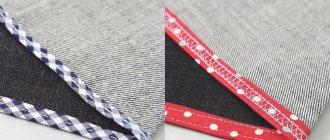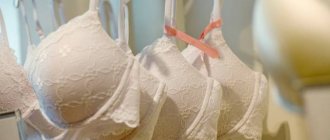Mink fur has been one of the most popular furs for many years.
Today, thanks to the careful work of breeders over many years, a huge number of its colors can be found on the fur market - from bluish-black to snow-white. Nevertheless, from year to year, natural and natural colors of mink coats : brown, pastel, beige. Classics of the genre are black fur coats, white mink, as well as gray-blue shades, which look stunning and literally drive fashionistas around the world crazy.
Dyed fur models are also in demand, for example, mink coats in orange, green, yellow, blue, and purple. Such exotic colors are an excellent option for those who are not afraid to experiment. However, in the pursuit of originality, one should not forget that dyeing significantly degrades the quality of the fur and such a fur coat will last at best a couple of seasons, and at the same time manage to go out of fashion.
It is simply unrealistic to describe all the tones and half-tones of the most beautiful mink fur available in nature, so we will limit ourselves to just getting acquainted with the basic color schemes.
Mink coat powder color
One of the representatives of everyone’s favorite classic is a powder-colored mink coat in its different variations. She enjoys the well-deserved attention of many fashionistas, regardless of their age. “Powdery” are considered shades in the color range from rich beige to “coffee with milk”.
Fur beauty in light colors, as a rule, is reserved for special occasions - weddings, going out. However, such a mink can (but is not very advisable) be used every day, but very carefully, since this product is easy to get dirty.
Bear: product colors for men and women
Bear fur is valuable due to its undeniable practicality and functionality. For a long time, outerwear for the stronger sex was made from the skins of this animal, since the material is extremely massive and bulky. But modern technologies, as well as fresh design solutions, make it possible to create elements of both men's and women's wardrobes that can unobtrusively emphasize the advantages and hide the flaws of the figure.
The bear skin consists of two protective layers: soft, short, thick pile with thermal insulation properties, combined with long and sparse piles with a water-repellent effect. This means that winter clothes made from such material will not only keep you warm in the frosty cold, but will also protect you from sudden snowfall, sleet or rain.
Nowadays, vests made from brown bear skin are popular, they perfectly fit into the oversized and unisex style. Due to their massiveness and large mass, fur coats and sheepskin coats made from this material are more rare than common. Its natural shades vary from fawn to brown-brown and almost black.
But designers and stylists annually offer several styles of women’s fur coats made from white bear fur, since the bulky appearance of the material is well neutralized by a light, delicate tonality.
Black mink coat
The black color of mink coats is considered truly royal among minks of other colors. Due to its popularity, fur of this color is quite often counterfeited - lighter skins are dyed into it. In this case, the color of the mink will be very rich, without the characteristic dark brown tint. Dyed mink will have the same black color at the base of the skin, which is usually gray or flesh-colored on natural mink. To avoid purchasing a low-quality product, it is advisable that a black mink coat have a complex, original style.
Natural mink
- Dark brown (scanbrown) . Natural color of purebred Canadian or Scandinavian mink. The color is completely natural. The skin has a dark ridge and brown sides
- Standard dark brown (STK) . The natural color standard of Russian mink. In no way inferior to Scandinavian and Canadian ones. Has longer hair and a thick undercoat
- Brown (walnut) . Natural color of minks from Canada and Scandinavia. The color of the ridge is darker, and the sides are pronounced brown
- Light brown (skanglow) . Skins with a hint of hot chocolate. Finnish mink shade
- Light brown (pastel) . Color similar to marten fur. It varies in shades of chocolate. Characteristic of minks bred in Canada
- Beige or palomino . Pale beige or light beige color. Swedish and American palomino meet
- Light beige (pearl) . Characteristic of minks from the USA and Finland
- Hedlund . Mink color with a bluish tint. The fur tone is uniform, does not contain transitions
- Sapphire . Skins with a pure blue tone, moving from dark to light. Blue-gray fur with a pronounced dark ridge
- Iris (blue iris) . Shade of Aleutian mink skins from Alaska. They survive very poorly in captivity, so natural color is quite rare
- White. White mink, without light or dark spots, with a uniform color over the entire surface of the skin.
- Krestovka . The color of the skin of an artificially bred animal. The white color on the belly and sides fades to darker (to black or brown) tones closer to the ridge. The head, back and base of the tail have dark pigment spots in the shape of a cross. This mink has white underfur
- Shadow (shadow) . It has the same color as the cross, but due to the darker tops of the guard hairs against the background of the white underfur, a shadow seems to fall on the skin
Gray mink coats
This color of a mink coat can be represented by one of several dozen shades available. The fur undertone of such a product can be bluish or white, but the most fashionable trend remains the graphite version.
Gray mink is universal, not as difficult to care for as light shades of fur, and at the same time looks very graceful. Plus, gray mink coats can even visually rejuvenate their owner. The shortened version is the ideal solution for a young girl.
Lifestyle and habitat
The mink has an active character. It is active, especially in the aquatic environment, where, thanks to its streamlined body, it rows well with its front and hind legs and pushes forward, dives and moves along the bottom.
Underwater, a small predator can arrive for about two minutes, and then emerge, take in air and repeat the action. An approaching danger on land can even force the animal to climb onto a branch of a tree or bush.
Mink is an animal that leads a solitary lifestyle and chooses quiet and secluded places for its habitat. For example, off the coast of freshwater reservoirs, small rivers or swampy lakes.
Minks settle either on protruding hummocks surrounded by water, or in dug holes, where there must also be access to water. These can be old holes of water rats or natural depressions where minks additionally equip themselves with a bedding of grass or feathers.
Mink is a predator with a strong and elongated body, a high degree of mobility, and therefore is an ideal hunter, can catch and eat any smaller animal, both in the aquatic environment and on land. He earns food for himself by doing his favorite activity - fishing.
Animals at war with mink include river otters and feral dogs. Otters, because both species often settle in the same places, but the former displace minks, being stronger, larger and faster. And dogs find the nests of fur-bearing animals by smell and destroy their offspring, although they pose no less a danger to adult animals.
Mink are predominantly nocturnal, which is why they can rarely be seen in the late evening or early morning near water bodies. Based on the traces left behind, one can judge the presence of a mink in a particular place. Her paw prints are similar to those of a ferret, but larger and rounder. The mink makes its way along the studied paths every day, marking the territory with scent and visual marks.
The mink becomes most active , when the first signs of sexual heat appear in females and the rut begins, as well as in the fall, when the young animals settle and search for the most favorable, quiet and calm bodies of water.
Mink coat color mahogany
Another classic color of mink coats is mahogany. This is a fairly dark representative of the brown range, obtained by crossing brown and black mink. This fur has a not very high, but at the same time thick awn, as well as a dense underfur. A distinctive feature of this skin is the black stripe running along its ridge. A mahogany-colored mink coat is slightly more expensive than a regular brown one. On sale you can find both classic rich mahogany and its lighter versions.
Dyed mink
- Anthracite . The guard hair is dyed black, and the underfur is dyed brown. It turns out something similar to scanblack
- Palette of dark colors (from green to red) . Obtained by dyeing the guard hair and underfur, and bleaching the skin side
- Palette of bright colors . It is obtained using the same technology as dark ones, but the inner side is bleached, not the skin side
- Briza . Painting neon colors with fluorescent paint
- Blue-gray colors . The entire fur is dyed blue-gray, and the flesh is bleached
- Snow top . Bleaching or dyeing of guard hair with its reservation. During the process, a smooth transition is obtained from light to dark or vice versa
- Milky Way . The painting process is very similar to the previous version. Only the bright areas are unevenly distributed. This results in a starry sky effect.
- Degrade . Heterogeneous dyeing of the skin with a flow from head to tail
- Bear . Chocolate color, tinted, with a black stripe along the ridge
The above list of mink colors is not exhaustive; it describes only the most common colors that are used when sewing fur hats and outerwear.
Mink coat color pastel
Pastel-colored mink, which has variations from beige to light brown, also belongs to the same color scheme. The underfur of such fur has a bluish or more valuable lilac tint. A delicate mink coat in pastel color can decorate the most discerning fashionista. Another advantage of outerwear made from this kind of fur is its greater durability in comparison with products made from fur in cold shades - it also turns yellow, but its yellowness looks more elegant.
What kind of fur does a mink have: a palette of colors from blue to black
Winter mink products have been considered classics of the fashion genre for decades. Fur coats and vests, capes and muffs, a variety of headdresses made from the skins of this animal continue to confidently conquer connoisseurs of respectable and practical wardrobe items. The material is distinguished by an incredibly rich palette of natural shades: what colors of fur a mink has depends on the animal’s specific breed.
All “fur” varieties of these animals are divided into the following groups according to color:
- Dark
- Brown
- Silver gray
- Light
- Cross
The dark group includes breeds whose color is close to black. These are scanblack, blacknafa, STCH (standard black mink). It should be borne in mind that in nature there are no purely black mink skins; in any case, they have a brownish tint. To achieve the most saturated shade, tinting technology is used.
Representatives of the brown group are such varieties of mink as mahogany with the darkest brown tint, walnut with a golden brown color, pastel with the lightest brown skin, distinguished by a slight smoky-lilac tint.
The silver-gray group includes animals of the silver-blue breed, distinguished by gray fur, sometimes with a brown tint. This also includes the iris variety, the representatives of which have the darkest gray shade and a light-toned underfur. This group also contains sapphire breeds - with light gray and violet - with shining fur.
The light group includes varieties such as palomino with fur of a coffee-milk shade, pearls with a beige color, white - perfectly clean without any inclusions.
Blue mink coat
To obtain the impeccable appearance of blue mink fur and produce such an original product as a blue mink coat, selection alone is not enough, so manufacturers subject it to additional processing that is harmless to it. Most often this is the coloring of the underfur and the tinting of the long guard hairs. The color of mink coats shown in the photo is most suitable for brunettes and brown-haired women.
Nutrition
The mink's diet is based on small river fish. Since the animal often obtains food for itself through fishing, its prey includes perches, tench, minnows, and gobies. The fur-bearing animal is not averse to feasting on other small animals located near bodies of water: mollusks, frogs, crayfish or river rats. Thanks to its dexterity and resourcefulness, a mink is able to wait and catch a wild bird, a young squirrel or a muskrat.
In the cold season, when hunting turns out to be unfruitful, European-type minks are supported by tree roots, wild lingonberries and rowan berries, and seeds found. As winter approaches, the animals stock up on fish and berries, storing them in their homes. The American mink prefers to eat crayfish; for it this delicacy is tastier than fish.
It is worth noting that the mink is not capable of causing much damage to fisheries, because it feeds on non-commercial fish species. In winter, these predatory mammals have to hunt exclusively on land, as the bodies of water that were previously their hunting grounds freeze.
As a result, minks kill mice and other rodents more actively in winter than in summer. Thus, the mink takes care of the environment and regulates the number of small rodents that harm nature. An average mink needs only 200 grams of food per day to satisfy its hunger.
She can divide this amount of food into 4-9 meals per day. If the available food is more than this norm, then the enterprising animal will leave reserves in its hole. The mink can be considered a very whimsical animal; it prefers to feast on fresh animals, and will only touch rotten meat after 3-4 days of hunger. Therefore, the predator regularly updates its reserves so as not to encounter this problem.
If we talk about minks living in captivity, they are usually fed fish, and sometimes grains, vegetables and even dairy products. On fur farms and farms, they carefully monitor the balance of the animals’ diet, because the quality of mink fur .
Mink coat in cappuccino color
A constant fashion hit is a cappuccino-colored mink coat. Outerwear made from fur of this color is universal - it looks great on women, regardless of their age and body type. In addition, the pleasant pastel color of mink coats, photos of which are presented below, favorably sets off a light tan of the face and does not emphasize the excess whiteness of pale skin, which makes the coat suitable for the fair sex of various color types.
Darker colors of mink coats of this color are an excellent option for middle-aged women, but young girls should give preference to more delicate light colors.
Pile processing
Thanks to selection and various methods of fur processing, the list of types of mink coats has expanded significantly.
Most often, the fur is processed as follows: it is cut, a pattern is applied with a laser, and it is plucked.
After processing by any of the above methods, the fur becomes less durable . Although this does not affect the demand for mink coats. Such products are designed for just a few seasons of wear and are created for fashion lovers. Unlike the classics, they will not be worn for ten or fifteen years, but will go out of fashion in a few years!
For fans of consistency and classics, connoisseurs of quality and truly precious fur, it remains the best to choose mink with raw fur.
Mink coat in ice color
Fashionistas are especially fond of the ice-colored mink coat, which is a type of blue mink in which the underfur is bleached to an almost pure white color, and the spine is left unchanged - gray, sometimes with a beige tint. When choosing a mink coat color such as ice color, it is pleasant to know that, despite its artificial origin, such mink has the properties of natural fur - it is practical, resistant to moisture, and can be easily cleaned from dirt. Fur products of this color can make dark-haired ladies look like real snow queens.
Bleached mink
- Gold (gold) . Artificially bleached brown mink skins from Denmark, Finland and Sweden. The final shade of gold depends on the initial tone of the brown mink
- Crushed ice . Mink with a silver-blue tint, the underfur of which is completely bleached. It is obtained by lightening sapphire-colored skins
- Champagne. Mink with a golden-cognac tint, the underfur of which is also bleached. The original mink is the color sergo (gray-blue)
Pink mink coat
Many women do not even suspect that in the natural environment you can find mink with a natural pink color, and are sure that clothes of this color are made only from artificial fur. However, breeders managed to obtain the appearance of this animal, whose skin contains natural pink shades. Such a bright and glamorous model as a pink mink coat will ideally fit into the winter wardrobe of fashionistas who always want to be in a good mood and charge those around them with their optimism.
Every man to his own taste? Stylish mink fur coats, presented in a wide variety of shades, prove the opposite and allow any representative of the fair sex, without exception, to choose a suitable tone that emphasizes her femininity and elegance.
Classification of mink skins by size
According to the standards of the Russian Federation, skins are classified into two sizes, length and width. The length is measured from the midline of the eyes to the base of the tail, and the width is measured along the central axis of the skin and is divided into two, that is, when indicating the width of the mink skin, only half of it is actually indicated. The gender of the mink is also taken into account, since the males of this animal are, as a rule, much longer than the females and have thicker fur. Females are smaller, with thinner flesh.
The skins of males are most often longer than the skins of females
But the classification remains the same for both males and females. There are five size categories for mink skins:
- Particularly large A - length over 70 centimeters, width over 7.5 centimeters.
- Particularly large B - length 65-69.9 centimeters, width not less than 7 centimeters.
- Large - length 54-64.9 centimeters, width not less than 6.5 centimeters.
- Medium - length 47-53.9 centimeters, width not less than 6 centimeters.
- Small - length 40-46.9 centimeters, width not less than 5 centimeters.
Mink skin size categories
"Marble"
The “marble” mink is a beautiful hybrid animal. A creature that is the only example of a mutation, as a result of which the “fur coat” of a unique animal acquired a unique yellow tint. In other cases, such beauty can only be achieved through bleaching.
The color of this animal is dark yellow with a noticeable admixture of chocolate-colored stains. Marbled mink are rarely bred; for this reason, the price of its fur is high, and the demand for furriers is also high.
Now work on breeding new and new varieties of mink does not stop. Tireless breeders delight fur breeders and fur sewers with ever new achievements. The variety of mink colors allows designers to come up with unique clothing models. So there is plenty of room for flights of fancy, if you wish!
Disadvantages of this type of outerwear
Like any other thing, coats made from dyed skins have disadvantages that you should pay attention to when purchasing.
The disadvantages of mink products include:
- High price . Even though a dyed product is cheaper than a natural one, it still remains expensive, since not everyone has the opportunity to purchase it.
- Expensive repairs . If repairs are still required, it will not be cheap precisely because the fur coat itself is not cheap.
- Items made from natural fur require special care ; they must be constantly aired, protected from moths, and stored exclusively in a case.
- There is a high probability of running into a fake , since products that undergo various processing are the easiest to counterfeit.
In order not to run into a fur coat that will only disappoint you in the future, you need to buy them only from trusted sellers and suppliers.
Features of the main types
There are approximately 50 million of these furry animals on our planet Earth. Depending on the territories in which they live, they can be divided into four separate groups: American, Scandinavian, Russian and European. The common ancestor was the American mink.
Mink in the wild.
Around the world, there are currently more than three hundred species of mink, which are divided by color. American minks are of greatest interest. Hundreds of large farms are engaged in breeding, growing and selling this popular species. Fur breeders provide mink skins to producers who can create wonderful products from beautiful mink fur. The value of each individual skin depends on the place where the animals live and the conditions under which they are kept. To be well informed about the main types of mink, you should become familiar with each species individually.
